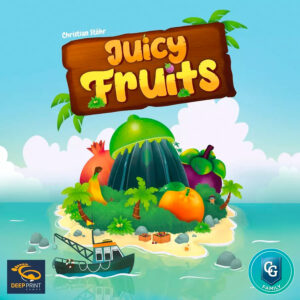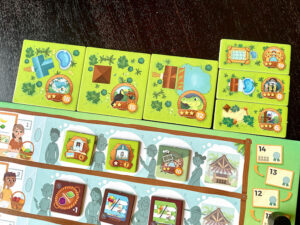 There I was, surrounded by the most glorious vista, lounging in the shadows of the fruit trees that populated this quaint tiny island. Waves lapped against the boats near the shoreline as captains smiled at the islanders delivering the daily harvest for export. Suddenly, the winds shifted violently, and upon opening my eyes I realized I was surrounded by a group of ninjas with blades drawn. I jumped up, grabbed the nearest fruit I could find, and tossed it at an approaching threat. Their blade sliced—
There I was, surrounded by the most glorious vista, lounging in the shadows of the fruit trees that populated this quaint tiny island. Waves lapped against the boats near the shoreline as captains smiled at the islanders delivering the daily harvest for export. Suddenly, the winds shifted violently, and upon opening my eyes I realized I was surrounded by a group of ninjas with blades drawn. I jumped up, grabbed the nearest fruit I could find, and tossed it at an approaching threat. Their blade sliced—
Editor: “Um, I think you’re talking about the wrong game here.”
Me: “What do you mean? There’s a bunch of fruit. There’s slicing. Isn’t this—”
Editor: “You misread. It’s not slice. It’s SLIDE.”
Juicy Fruits is a game for one to four players from Deep Print Games as part of the Capstone Games family line. This lightweight game tasks players with sliding tokens to collect different types of fruit to fulfill orders both on their island and with local businesses. There are no ninjas. Obviously.
Gameplay Overview:
In a game of Juicy Fruits, players harvest a variety of fruit on their individual island paradise. They earn points by supplying ships along the coastline and by adding structures to their landscape. Play continues clockwise and ends when a license marker moves to the end of a license track. The player who gathered fruit most efficiently to claim the most points is the winner.
Players begin with an individual island board populated randomly with five unique fruit tokens: banana, lime, pomegranate, orange, and mangosteen. The beaches of the four shorelines on the board hold different ship tokens that signify both the fruit loadout required to fulfill their order as well as the points gained by doing so. A business board is centrally located and features randomized business tokens seeded along five different rows. Each row indicates the required fruit necessary to gain one of these tokens.

A turn consists of two steps. During step one, players either move one fruit collector token a number of unblocked spaces and collect an equal number of fruit(s), or they move one mobile business token and use its ability. In the early stages of a game, movement is minimal. What starts as a 3×3 grid may potentially expand into a 5×5 grid by endgame. A collector token only allows for a single fruit type to be collected, but mobile business tokens increase the variety of fruits available to collect during a single turn.
During step two, players may choose to supply one of the ships along any coastline by returning the fruit required to the supply. This removes the ship token from the beach and opens additional space for tokens. Alternatively, players may choose to claim a business token from the business board by returning the fruit cost depicted. These tokens, once claimed, are placed onto the player’s island board. Some of these tokens provide immediate points but take up valuable space. Others may be advanced collector tokens or ice cream cart tokens.

At the bottom of the business board is the ice cream area. It has on offer three different colored ice cream tokens as well as milkshake tokens. These can only be claimed if a player has an ice cream cart token on their island and they choose to move this during step one. If able to pay the required fruit, players earn points by creating ice cream cones or milkshakes.
A score board is included for easy point tracking. On the opposite side of this board is a module called the juice factory. If using the juice factory, a third turn step is added, which allows players to spend fruits to move along the factory conveyor belt for scoring opportunities over time. Players jockey for position and can block spaces, so being mindful of when and where to move is crucial.

Game Experience:
The sliding token puzzle that allows you to gain a limited number of a specific fruit is a great mechanic, one that I’ve not seen utilized as a central idea before. Turns start small, with the first turn seeing a return of a single fruit, but as the game progresses tokens begin to move three to four spaces (optimally) to increase inventory and potential scoring opportunities. The decision space between what to move where and when, as well as which businesses to add to the island board to increase points but minimize space is all well considered. When it works out, it feels great to collect fruit, add it to your inventory, and spend the correct combination for a boatload of points.

That said, based on the randomized setup of collector tokens, businesses, and boats, some players may start the game in an unfortunate position. This is a design where an optimal efficiency strategy can open the game early on for those able to piece their options together. And since there’s no variable turn order structure, a first player with a fortunate setup may find a way to get the only available collector token in the cheapest business row and begin to ramp up their engine much faster than the rest of the table.
There are ways to pivot when the best strategy is taken by another player, and there’s a consideration for this in place with abundant scoring opportunities. Mitigation comes into play with the simple fact that a new business token that provides scoring also takes up space. But gaining more fruits faster also clears more space as boats begin leaving the shores. The juice factory module provides a different avenue to score, but rather than being another option during step two, the fact that all players can access this during step three makes it another way to gain points for those who have more fruit.

The other aspect that I didn’t quite enjoy was the end game trigger linked to a license track. The token on this track is moved closer to the end when a business is purchased or one of the ice cream stacks is emptied, which makes sense as there are only so many business licenses to go around. However, this encourages players to rush the ending if they are doing well, perhaps limiting players who’ve fallen behind and are trying to get a production engine going. Switching this to a determined round structure may have provided a framework that matches the way that ramping up island production occurs.
As a lightweight family game, Juicy Fruits has a goofy theme to accompany the sliding puzzle. While the idea of collecting fruit and supplying boats works fine, once the business board comes into play it starts to lose focus. Not to mention the juice factory. I understand why the decision space finds players turning fruit into points more often than anything else, but it would have been wonderful to see the ships interacting with a different board rather than just giving points. There’s a disconnect between all the modules that don’t correspond with building up a small island paradise.
Four solo modes are included that provide varying degrees of difficulty. These are printed on the back of both player boards and boat tokens to minimize components. I was able to try three of the modes (easy, challenging, and a more randomized automa). Each lived up to their difficulty billing and were easy to set up and initiate, though there wasn’t a lot of depth to the gameplay interaction.
Final Thoughts:
Your island may not be infiltrated by fruit-slicing ninjas, but it is surrounded on all sides by commerce. Juicy Fruits is a lightweight family game that supplies a personal puzzle with a variety of decisions at the onset. I’m not entirely certain who the game is ultimately being marketed toward, as the efficiency engine that’s central to scoring can be brain-burning for a family-friendly evening. Analysis paralysis prone gamers may have trouble balancing the quick turn structure with optimizing the scoring options available. Adding in the juice factory gives slightly more weight for advanced gamers, but it doesn’t add much excitement to the mix. As such, it becomes a system that’s easy to engage with, but may ultimately shrivel up after a handful of plays when you’ve tasted all it has to offer.
Final Score: 3 stars – This sliding token and contract fulfillment game scratches that puzzle itch but can’t quite rise above the novelty of its central mechanic.
 Hits:
Hits:
• Strong sliding puzzle mechanic
• Tight efficiency decision space
• Plenty of scoring opportunities
Misses:
• Theme doesn’t quite coalesce
• Potential endgame license rush
• Needs more business variety























